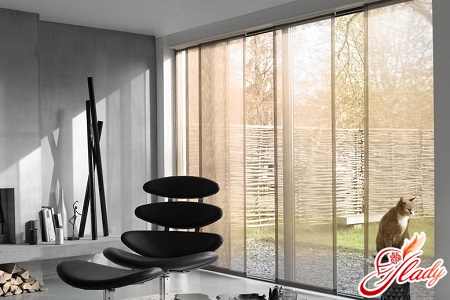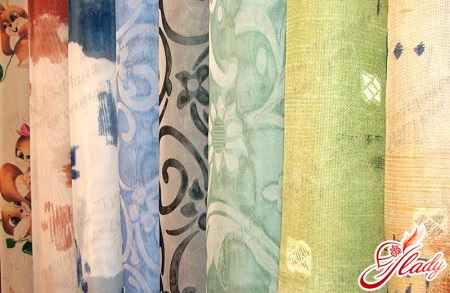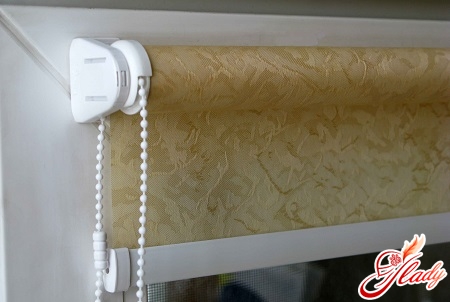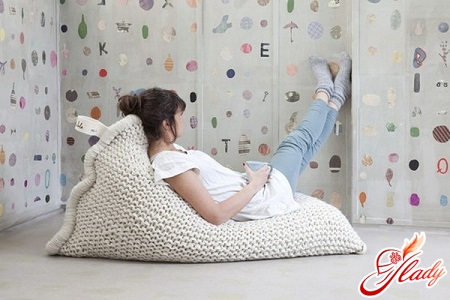
Japanese culture is one of the mostancient and mysterious. All objects of Japanese culture, to one degree or another, seem to be shrouded in mystery, enigma and certainly have a philosophical subtext. Today it is very fashionable to transfer Japanese style into modern interior design. How does Japanese style differ from traditional European ones? First of all, it is laconicism, simplicity and elegance at the same time. One of the very fashionable trends is decorating window openings with Japanese curtains. They are also called Japanese screens or panels. This is an excellent solution for spacious rooms with large "floor-to-ceiling" windows. What are Japanese curtains? Perfectly even fabric panels of various colors and textures that are attached to special multi-level cornices, like vertical blinds. It should be noted that such curtains are not a cheap pleasure, and there is also a high probability that the curtains you buy in the store will turn out to be "like Masha's". That's why we suggest you create Japanese curtains with your own hands.

What do we need for this?
- Roulette.Measure the window opening by length and width. Based on the width and length, calculate the amount of fabric you will need, taking into account that the panels should overlap each other a little. The standard for Japanese panels is a width of 60 cm, but you can change it at your discretion. For example: if the width of the window opening is 2 m 80 cm, then you can use 5 panels of 60 cm. In total, you will get 3 m, of which 2 m 80 cm is the width of the window, and 20 cm will ensure that one panel overlaps another.
- Special cornice. It can be purchased at any construction store. Curtains for Japanese curtains have several rows, usually from 2 to 5. Curtains on such cornices move to the right and left and can have a different control mechanism. You can control each sheet individually or in groups of canvas at the same time. There are also cornices with automatic control. This means that you can control your curtains by pressing the buttons on the remote control. Such cornices are very convenient, but it is worth noting that they are quite expensive and the electric drive will be somewhat protruding from the eaves, which is not very aesthetic. More cornices are made of different materials. They can be lightweight plastic and metal. Metal is usually designed for multi-level structures, heavier in weight.
Choice of fabric and texture
- Immediately the fabric. It can be anything, it all depends on your personal preferences. It should be noted that traditional Japanese curtains are made of natural materials, such as linen, cotton or silk. However, you can choose the fabric of any color and texture you like, or a combination of them. Suitable will be lightweight transparent fabrics, and heavy dense, and even bamboo or rice fabrics, Japanese straws, etc.
- Special Velcro for curtains. They can be purchased at any store specializing in window design. The fact is that the style of Japanese curtains does not tolerate accessories such as loops, rings and other. Japanese curtains are attached directly to the cornice with Velcro.
- Weights. Sold in the same place where the Velcro, in appearance resemble fishing weights and serve to ensure that your curtains keep perfectly straight form.

Do Japanese curtains with your own hands
First of all, we advise you to choose the fabric, widthroll of which is 60 cm. This will save you from processing the side parts of your curtain. Measure the cut lengthwise and process the edges. The bottom is processed with a drawstring, and the top is based. It is convenient to base several panels at the same time. After this, the curtains should be well ironed, they should be perfectly even. Attach a weight along the bottom edge. Next, sew on the Velcro. First, iron the Velcro to shrink it. Then lay it out on the table face up, apply the Velcro to the edge, secure it with pins and sew it on the machine. Then fold the Velcro to the wrong side and lay a machine seam along the front side of the product. That's all, you have made Japanese curtains with your own hands. All that remains is to hang your curtains on the window. Cornices can be ceiling and wall. Before installation, you should determine whether your curtain rod will interfere with opening and closing the window, catch on the window handle or touch the radiator. The length of the curtain rod is equal to the width of the window plus 30-40 cm. You will need a ruler and a level. Draw a straight horizontal line where you will have the curtain rod. Using a screwdriver, screws and dowels, attach the brackets. Make sure that the brackets are located symmetrically in relation to the window. Usually two brackets are used, but if your curtains are very heavy, it is better to install a couple of additional ones. Next, fix the curtain rod on the brackets and align it in relation to the window. Done. The curtain rod already has a hard side of Velcro. Attach your curtains to them and enjoy your own grandeur - you did it.









